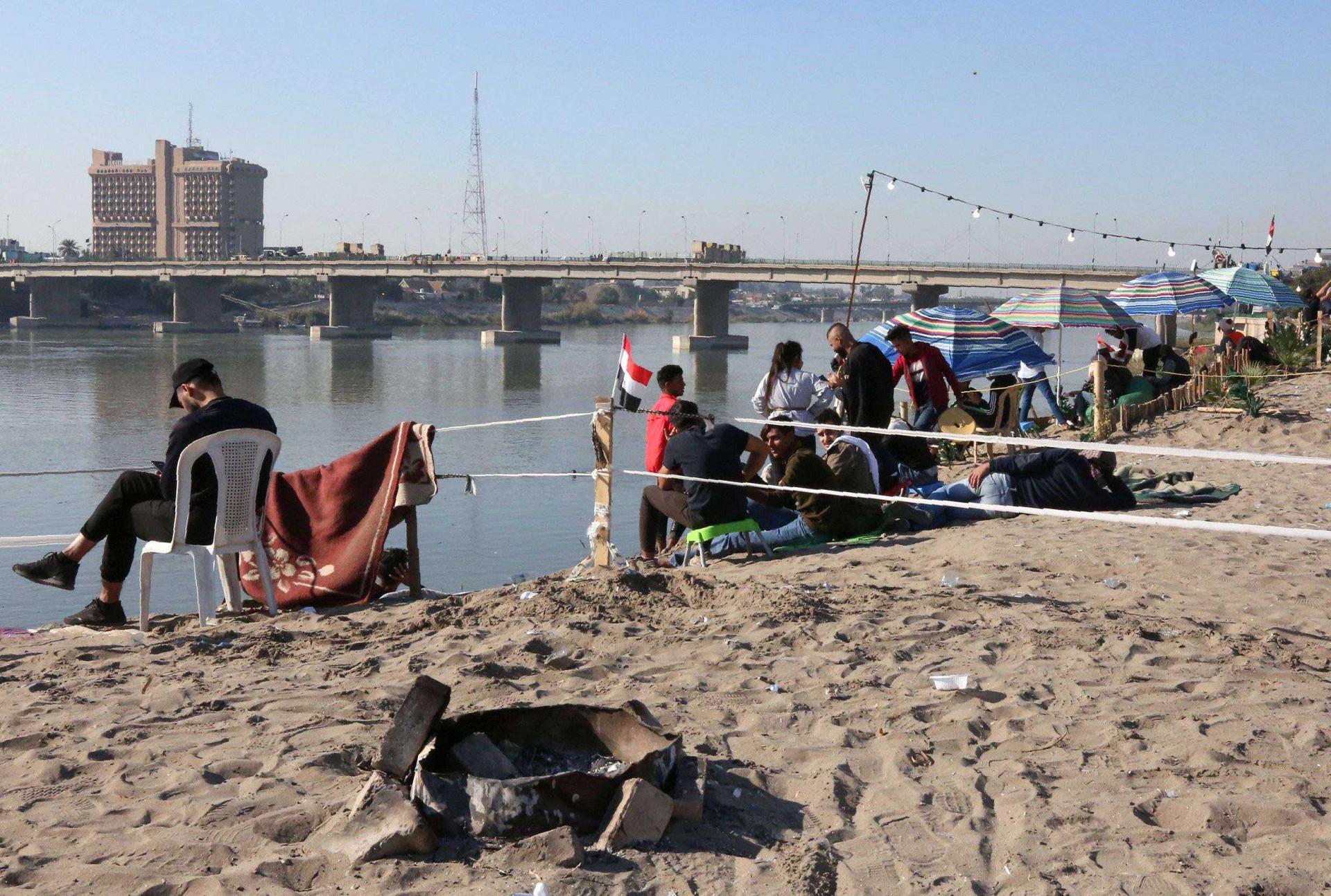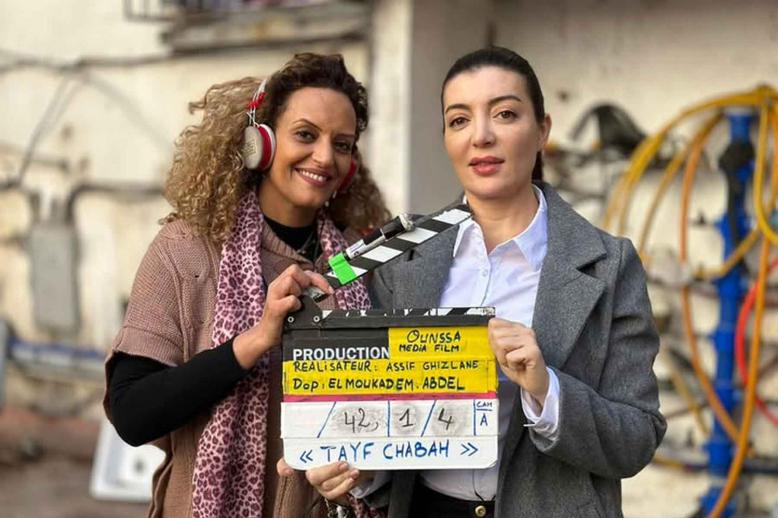Tahrir Beach, a safe haven for protesters from Baghdad’s turmoil
BAGHDAD - It was a sight that Baghdad residents were discovering for the first time. On the opposite bank of the Tigris River from the fortified area known as the Green Zone, where many government institutions and sensitive centres are located, is an area protesters call “Tahrir Beach.” With all the sports and artistic activities going on there, it was as if the place was totally outside time.
The beach borrowed its name from Baghdad’s Tahrir Square, where, for more than 100 days now, protests have been concentrated.
During the political uncertainty and insecurity sweeping Iraq, Tahrir Beach has become a haven for protesters, a place where activist Alaa Sami, 27, said: “Protesters can restore themselves with hope and energy to continue their fight against corruption and the ruling political class.”
Sami, a graduate of the Faculty of Chemical Engineering and one of those who helped turn the beach into a respite, said: “We can no longer accept the miserable reality where we live with corruption, nepotism and sectarianism that have killed everything beautiful in our country.”
Pointing to the sports grounds and umbrellas on the half-kilometre stretch of beach, Sami said it had been set up by activists “without the help of the government,” which he said was busy protecting itself from the angry people.
Tahrir Beach is on the eastern bank of the Tigris and extends from Al-Sink Bridge and Al-Jumhuriya Bridge in Baghdad.
Sami said the idea was to create a space for protesters to “unwind, recuperate and re-energise away from the tensions and confrontations of Tahrir Square.”
“The same protesters who face daily tear gas and live bullets are the ones who contributed to the creation of this beach,” he said. “The message being that the goal of the revolution is rebuilding the country and giving hope to its citizens at a time when such things are absent from the minds of the country’s politicians.”
The beach is reminiscent of sea resorts. There are plenty of umbrellas dotting the beach, volleyball and tennis courts, ping-pong tables and plenty of other games. Activists said one of the motivations behind the encampment was to break social and class barriers and give impetus to the protests.
Activist Qaysar al-Wardi, 28, said Tahrir Beach brought together young Iraqis from various parts of Iraqi society.
He said the project can “show the world Iraqis can live with each other, rich and poor committed together to the same goal. This is the same spirit that permeates all of our actions since the beginning of the protests in the country.”
Wardi said Iraqi women have been involved since the beginning and participated in preparing the beach, which “was meant to become a safe place for interaction between and participation by young people from both sexes.”
He said Tahrir Beach was a message to young people that they can change their reality without relying on institutions or organisations.
He added, with a touch of pride, that “no authority has any authority over the beach. It belongs to the people.”
Wardi said even if the government planned to rehabilitate the beach, those plans “would have been dead and buried by the abhorrent administrative routine, corruption and the ever-present quota system.”
He pointed out that the popular movement was sustained by individual efforts and self-financing activities and initiatives that sprung up in Tahrir Square. Bazaars and shops have been set up in the square to sustain the movement. There are even a theatre and a cinema house set up in Tahrir Square.
Mustafa Abdullah, 26, a graduate of the College of Administration and Economics, said: “I couldn’t find any employment offer since I graduated. However, I found what I always wanted to do as I joined the young men of Tahrir Square. We’re insisting on our demands for a better life for us and for future generations.”
“I have been in Tahrir Square since the 25th of last October and I live in Jabal Uhud (the Turkish restaurant). I rarely go to see my family now and they have been visiting me from time to time in the square,” he said.
He admitted that initiatives started by the activists have contributed to perpetuating the momentum of the protests.
“I helped prepare Tahrir Beach, which we consider to be the space where we can spend some quality time with the rest of the youth from Baghdad,” he said.
“People here do not make you feel that you’re a stranger and this, in itself, is an achievement. We did not experience this before because of all of the barriers planted by the political parties in the minds of Iraqis in which they classified people by their beliefs and their sects, sowing distrust and fear of the other.”
Haya Asim, 18, interrupted to say: “What disturbs them the most (as she pointed to the Green Zone on the other bank of the Tigris) is to see us united and working together.”
Asim said Tahrir Square has inspired many Iraqis and Tahrir Beach is an integral part of the popular movement. She said that the young people of Iraq are adamant about perpetuating the popular movement with initiatives such as Tahrir Beach until their demands are met.
Oumayma Omar, based in Baghdad, is a contributor to the Culture and Society sections of The Arab Weekly.
This article originally published in The Arab Weekly.







